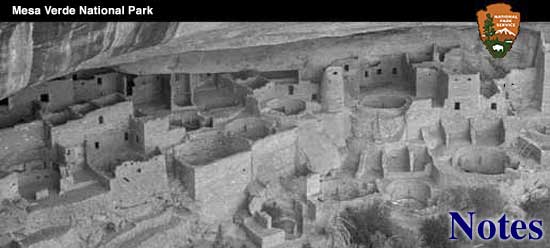

|
The chronology of tree rings established by Dr. E. A. Douglas, of the University of Arizona, is entitled to a full chapter in the "Romance of Archaeology." How he, and astronomer, was led from the study of celestial spaces to this terraqueous globe and such common place operations as cutting trees and timbers is related in the National Geographic Magazine1. Thus stands the tree, "a mighty monarch of all it surveys," through summer and winter; wind and storm; sunshine and rain; and dry seasons and wet ones. Each year it grows, responding to both favorable and unfavorable conditions. Externally the tree gives little evidence of its struggle, except that it seems to grow a little taller and stouter as the seasons come and go. Look beneath the bark and you will find recorded, within the woody structure of the tree, a true diary of the climate, good and bad, during the entire life of the tree. Year after year the tree adds an appropriate ring that can be identified, and with slight modifications all trees growing in the same vicinity contain a similar record. Dr. Douglas has been able to identify these rings and then by graphing them to span the life of the living trees, carries the record back to 700 A.D. with the help of beams from ancient ruins in the Southwest. Having established the chronology for over 1200 years cross sections of beams and timbers can how be compared to it, and the year of birth and death of the tree from which they were cut determined. Forty-nine beam sections from ruins within Mesa Verde National park were collated with this chronology. Assuming that the date of cutting of the timber was the year of actual use in the construction of the cliff dwelling the following dates have been established:
This answers the question of the date of the existance of the Cliff Dweller within these homesites. However there are still many other problems that arise. How long did they live within each cave? Time involved in the construction? Do the surface pueblos predate the cliff dwellings, are they contemporanious, or are they later structures? Then did the Basket Maker of the third cultural group construct his pithouses? To help throw light upon such problems brought Dr. Douglas to the Mesa Verde this year, and a search for ancient timbers of pine and fir was started. Among the surface ruins around Mummy Lake we dug for charcoal; lintel and floor beams were bored for cross sections. Balcony House and Cliff Palace were searched for butt ends of beams so that more inclusive dates of habitation may be obtained. Superintendent C. M. Finnan recalling the exposure of charred root timbers, when an expedition in 1926 uncovered three Basket Maker sites in Step House Cave, dispatched the Chief Ranger and an assistant for the logs. The men returned with three well preserved pieces; the larger one, ten inches in diameter, brought a look of pleasure and keen anticipation to him who reads the secrets of the trees. We hope that the analysis of these timbers, borings and charcoal will throw additional light upon the past inhabitants of the Mesa Verde. As Charles N. Bliss so aptly puts it:
1. Douglass, A.E. The Secret of the Southwest Solved by Talkative Tree Rings. National Geographic Magazine, Vol. LVL, No. 6, December 1929, pp 736-770. -oOo- | ||||||||||||||||||
| <<< Previous | > Cover < | Next >>> |
vol2-1f.htm
14-Oct-2011